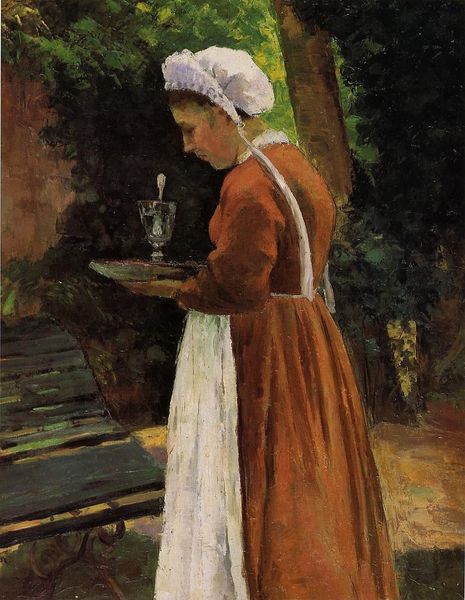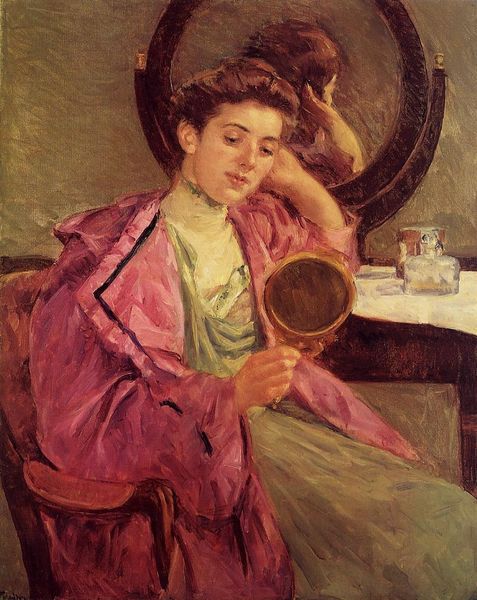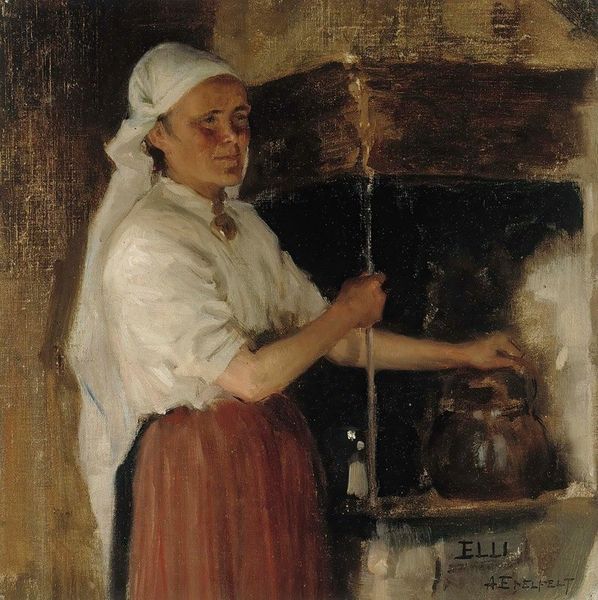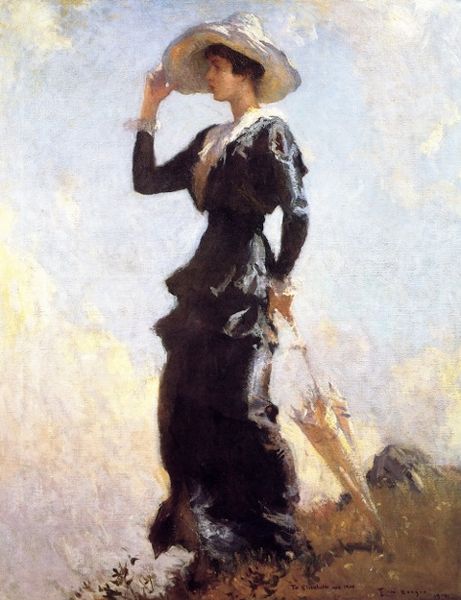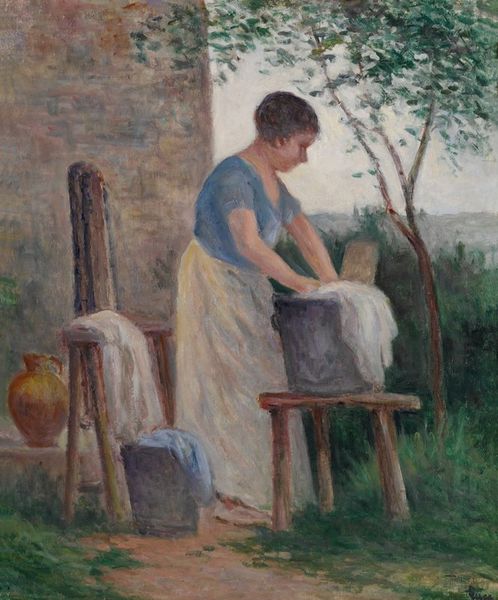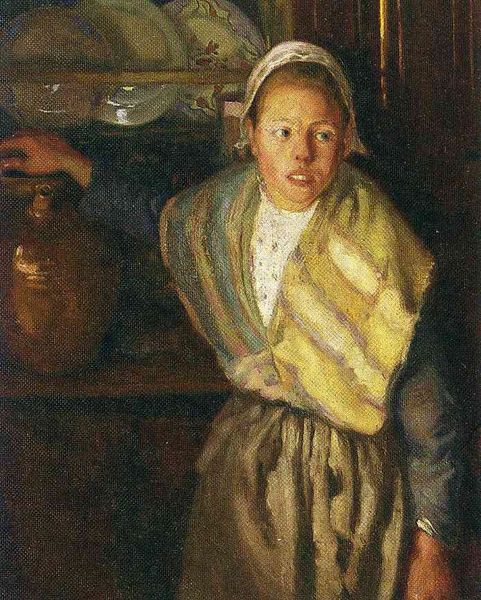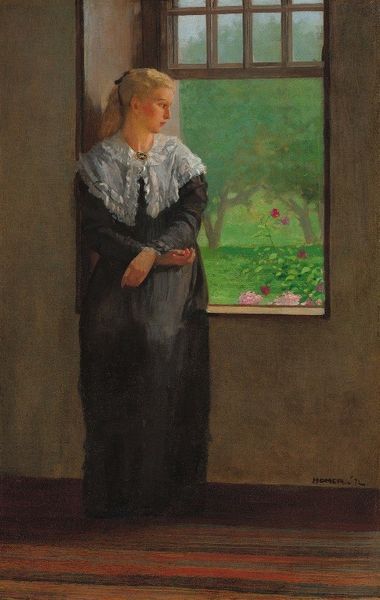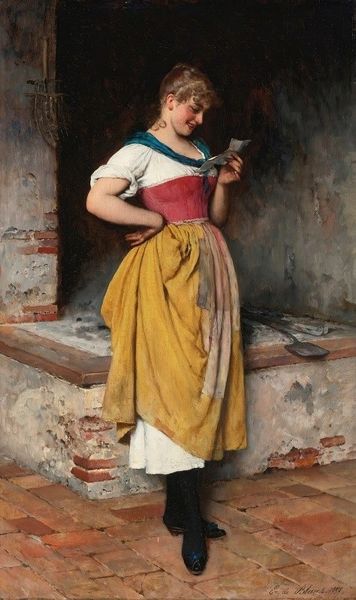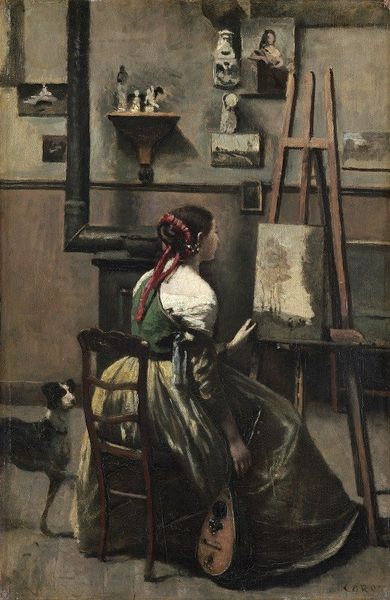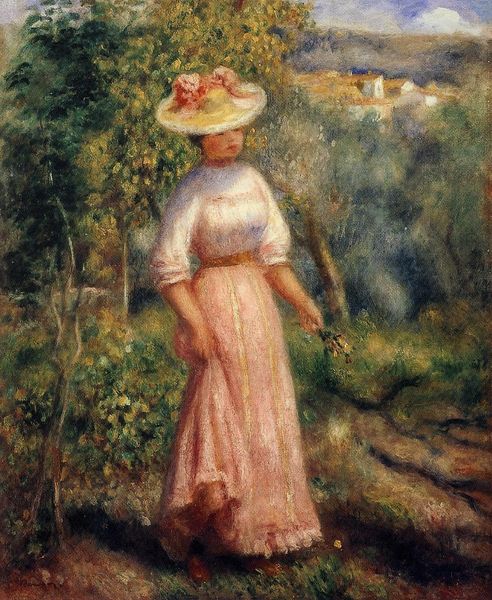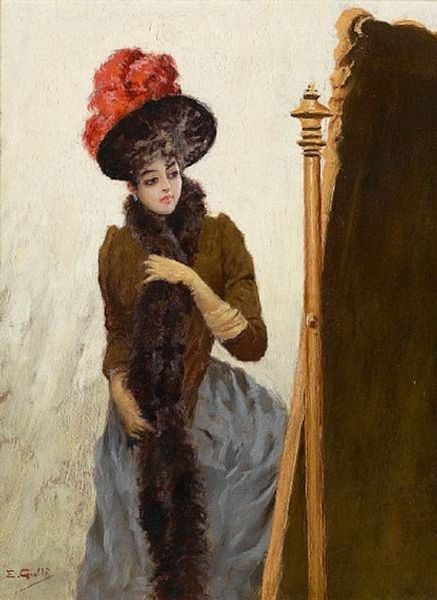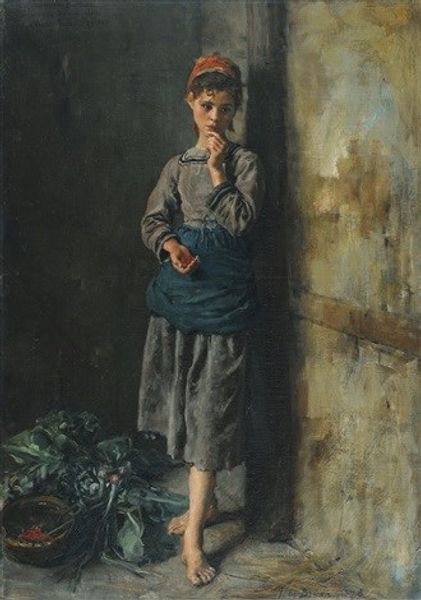
painting, oil-paint
#
portrait
#
painting
#
impressionism
#
oil-paint
#
figuration
#
oil painting
#
genre-painting
Dimensions: 65.5 x 47 cm
Copyright: Public domain
Curator: This is Pierre-Auguste Renoir's "Sweeper," painted in 1889. He captures a figure engaged in daily labor through the medium of oil on canvas. Editor: My initial reaction is a sense of quiet domesticity. The muted palette creates a very serene, almost melancholy, mood. It makes me think of long, quiet afternoons. Curator: It's interesting you mention the "quiet" and "domesticity" when looking at how Renoir addresses labor through painting. What elements in the materials or process make you respond that way? Editor: The way the light catches the woman's blouse is what really strikes me. There’s a softness, an almost tactile quality that transforms an ordinary chore into something beautiful, contemplative. The rough texture of the broom is intriguing too; it juxtaposes the smoothness elsewhere, drawing focus to that working object. Curator: Certainly. His treatment of labor isn’t about celebrating industrial production or progress. Here, it's focused on the materiality of everyday objects and individual actions within private spaces. Renoir is much more interested in a fleeting impression, creating his version of beauty even from humble subjects. Editor: I do think that this piece reframes something potentially monotonous—the act of sweeping—into an almost reverent scene. Maybe the "beauty" I perceive challenges our preconceived notions around labour and leisure. Curator: It prompts us to re-evaluate the social status around labor, for sure, because if we’re discussing material hierarchies, then Renoir is saying a subject of higher art can also come from the work performed by individuals within certain class strata. It questions those categories! Editor: I wonder, how much did Renoir really engage with, or consider those implications at the time, though? Perhaps the artwork acts more as a subconscious echo than as deliberate statement...an aesthetic observation. Curator: Fair point. While it remains in private collection today, these visual impressions inevitably influence a viewing public by circulating and prompting renewed observation regarding quotidian aesthetics. Editor: "Quotidian aesthetics"— I like that. It reminds me that even the most seemingly simple image can contain a world of meaning, just waiting to be swept up!
Comments
No comments
Be the first to comment and join the conversation on the ultimate creative platform.
